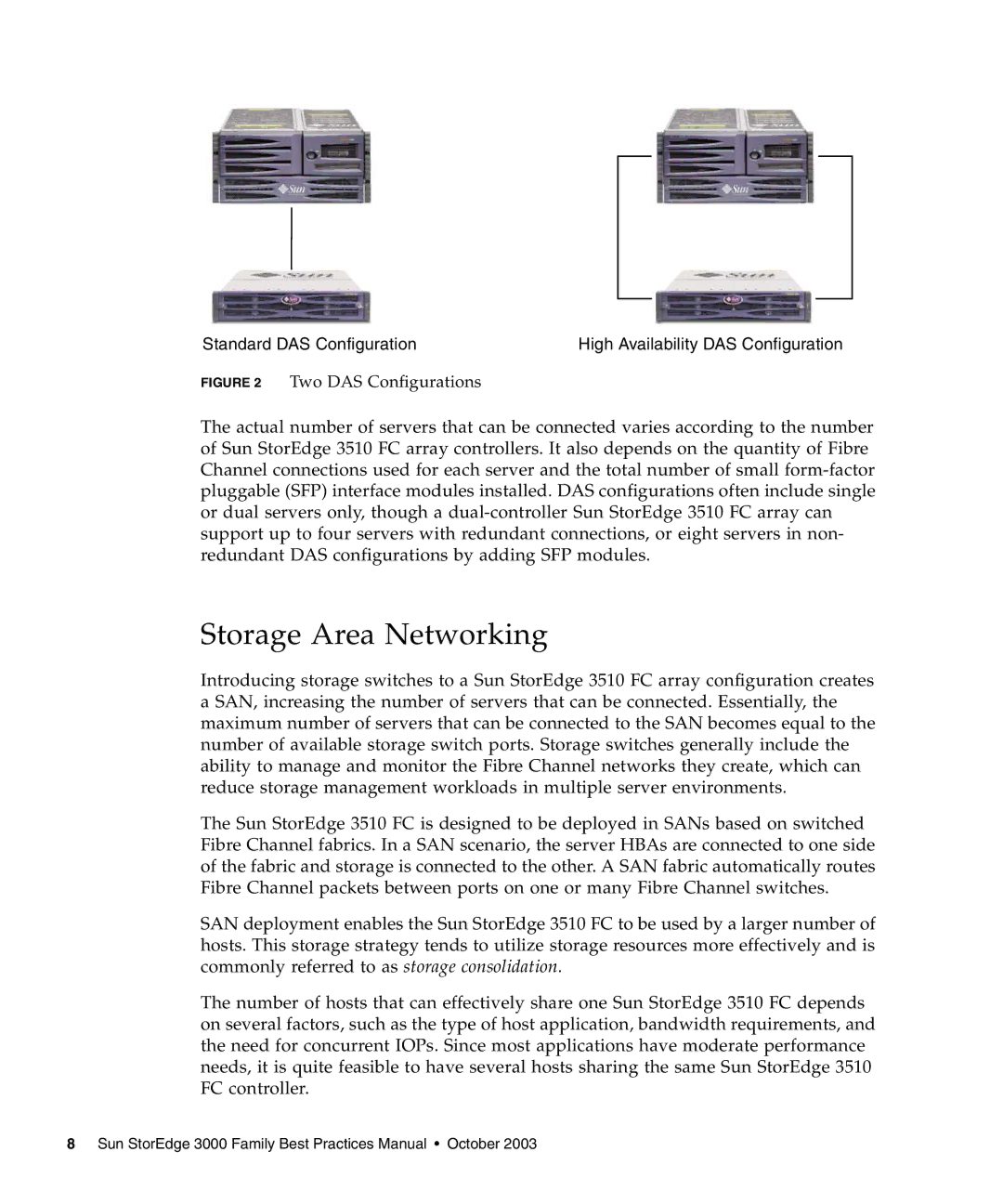
Standard DAS Configuration | High Availability DAS Configuration |
FIGURE 2 Two DAS Configurations
The actual number of servers that can be connected varies according to the number of Sun StorEdge 3510 FC array controllers. It also depends on the quantity of Fibre Channel connections used for each server and the total number of small
Storage Area Networking
Introducing storage switches to a Sun StorEdge 3510 FC array configuration creates a SAN, increasing the number of servers that can be connected. Essentially, the maximum number of servers that can be connected to the SAN becomes equal to the number of available storage switch ports. Storage switches generally include the ability to manage and monitor the Fibre Channel networks they create, which can reduce storage management workloads in multiple server environments.
The Sun StorEdge 3510 FC is designed to be deployed in SANs based on switched Fibre Channel fabrics. In a SAN scenario, the server HBAs are connected to one side of the fabric and storage is connected to the other. A SAN fabric automatically routes Fibre Channel packets between ports on one or many Fibre Channel switches.
SAN deployment enables the Sun StorEdge 3510 FC to be used by a larger number of hosts. This storage strategy tends to utilize storage resources more effectively and is commonly referred to as storage consolidation.
The number of hosts that can effectively share one Sun StorEdge 3510 FC depends on several factors, such as the type of host application, bandwidth requirements, and the need for concurrent IOPs. Since most applications have moderate performance needs, it is quite feasible to have several hosts sharing the same Sun StorEdge 3510 FC controller.
8 Sun StorEdge 3000 Family Best Practices Manual • October 2003
